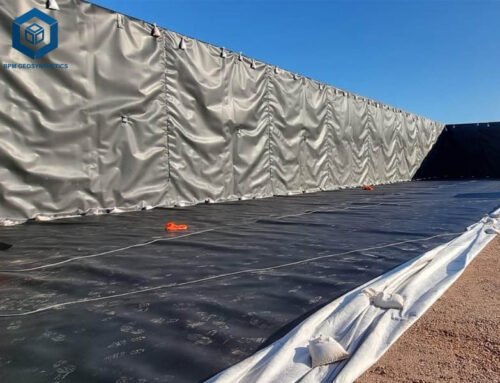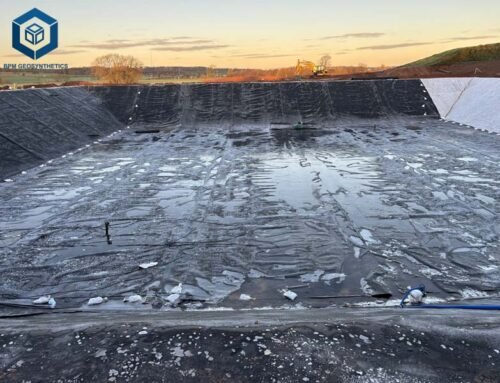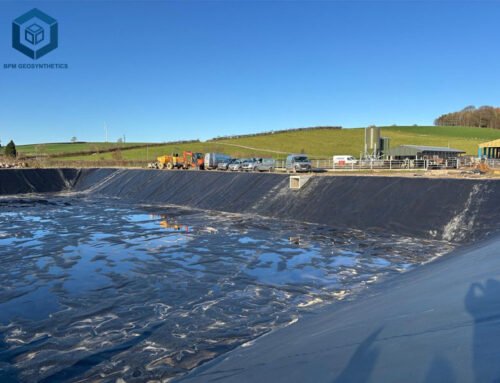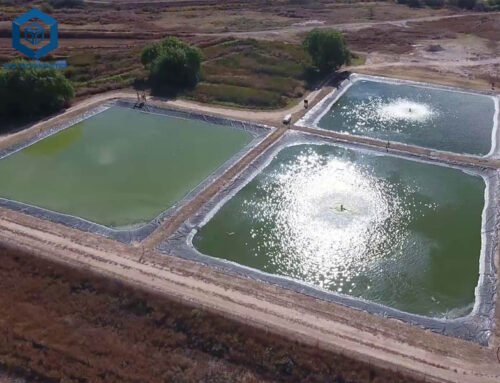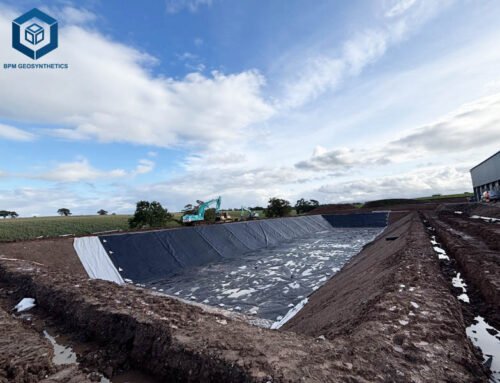High-Density Polyethylene (HDPE) liners are critical components in modern civil and environmental engineering, offering unmatched durability, chemical resistance, and impermeability for containment applications. With the global geomembrane market projected to reach USD 3.7 billion by 2030, growing at a CAGR of 7.1% (MarketsandMarkets, 2023), understanding HDPE liner pricing is essential for project managers, engineers, and procurement specialists. This comprehensive guide delves into the HDPE Liner Price, specifications, applications, and installation factors of HDPE liners, providing data-driven insights to optimize budgeting and project planning. Whether you’re lining a landfill, reservoir, or mining site, this article equips you with the knowledge to make informed decisions.
1. What Is an HDPE Liner?
HDPE liners, also known as HDPE geomembranes, are synthetic membranes made from high-density polyethylene resin, a thermoplastic polymer with a density of 0.94–0.96 g/cm³. Renowned for their strength, flexibility, and resistance to chemicals and UV radiation, HDPE liners serve as impermeable barriers to prevent fluid or gas migration in applications like landfills, ponds, and mining operations. Their ability to achieve 99.9% fluid containment, preventing up to 100,000 liters of daily seepage per hectare, makes them a cornerstone of environmental protection and infrastructure projects (BPM Geomembrane, 2025).
Composition of HDPE Liners
HDPE liners are primarily composed of 97.5% high-density polyethylene resin and 2.5% additives, including:
- Carbon Black: Enhances UV resistance, ensuring a lifespan of 20–50 years in exposed conditions.
- Antioxidants: Prevent oxidative degradation, maintaining performance in harsh chemical environments.
- Stabilizers: Improve thermal stability during manufacturing and installation.
These components are blended to meet stringent industry standards, such as the Geosynthetic Research Institute’s GRI-GM13 specification, which ensures quality and performance for HDPE geomembranes.
Key Specifications and Parameters
HDPE liners are available in thicknesses ranging from 12 mil (0.3 mm) to 120 mil (3.0 mm), with common options including 20 mil, 30 mil, 40 mil, 60 mil, and 80 mil. The choice of thickness depends on the application’s mechanical and environmental demands. Below are key technical parameters based on GRI-GM13 standards:
- Density: 0.94–0.96 g/cm³, providing high strength-to-density ratio.
- Tensile Strength at Break: 30–53 kN/m, ensuring resistance to mechanical stress.
- Elongation at Break: 400–700%, allowing flexibility under stress.
- Puncture Resistance: 600–1200 N, critical for preventing tears during installation.
- Tear Resistance: 150–300 N, ensuring durability in rough conditions.
- Hydraulic Conductivity: <1 x 10⁻¹² cm/s, offering superior impermeability.
- UV Resistance: Retains 90% strength after 2000 hours of UV exposure.
- Chemical Resistance: Resists pH 2–12, suitable for acids, alkalis, and hydrocarbons.
These specifications make HDPE liners ideal for high-stress applications, with 60% of liners costing under $16.15/m² due to their balanced performance (BPM Geomembrane, 2025).

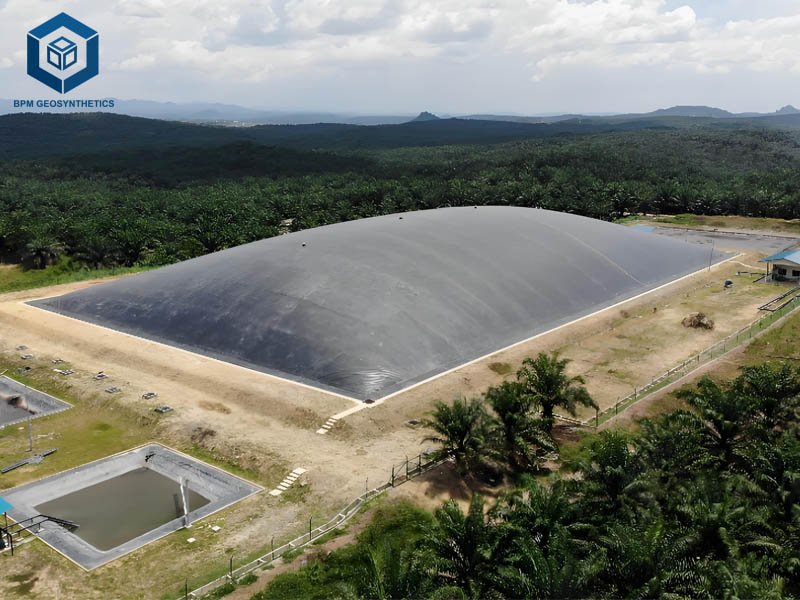
2. Factors Affecting HDPE Liner Price
The cost of HDPE liners varies significantly based on material quality, project specifications, and market dynamics. Below, we analyze the primary factors influencing pricing, supported by recent data.
2.1 HDPE Liner Price – Material Quality and Composition
The quality of HDPE resin significantly impacts cost. Virgin HDPE resin, used in high-performance liners, costs 20–30% more ($8.07–$10.76/m²) than recycled resin ($5.38–$8.07/m²) but offers a lifespan of 40–60 years compared to 10–20 years for recycled materials (BPM Geomembrane, 2024). Additives like UV stabilizers ($1.08–$2.69/m²) and conductive layers ($1.61–$4.31/m²) for leak detection further increase costs but enhance durability and quality assurance.
2.2 HDPE Liner Price – Thickness and Texture
Thicker liners cost more due to increased material requirements. For example:
- 20 mil (0.5 mm): $0.20–$0.50/sq.ft. ($2.15–$5.38/m²), suitable for ponds.
- 40 mil (1.0 mm): $0.35–$0.80/sq.ft. ($3.77–$8.61/m²), common for landfills.
- 60 mil (1.5 mm): $0.50–$1.00/sq.ft. ($5.38–$10.76/m²), used in mining.
- 80 mil (2.0 mm): $0.70–$1.50/sq.ft. ($7.53–$16.15/m²), for high-stress applications.
Textured surfaces, such as Microspike® (Agru America), add 10–15% to costs ($2.15–$5.38/m²) but improve friction on slopes, enhancing safety in applications like heap leach pads.
2.3 HDPE Liner Price – Project Size and Economies of Scale
Larger projects benefit from economies of scale, reducing material costs by 15–25% for orders exceeding 10,000 m². For example, a 10,000 m² landfill project using a 40 mil HDPE liner might cost $3.77/m², while a 1,000 m² pond project could cost $4.50/m² due to lower volume discounts.
2.4 HDPE Liner Price – Geographic Location and Freight Costs
Prices vary by region due to labor costs, environmental regulations, and freight charges. In North America and Europe, stricter regulations and higher labor costs increase prices by 10–20% compared to Asia or the Middle East, where local resin production lowers costs. Shipping a 10,000 m² liner costs $1,000–$3,000, with remote sites adding 5–10% to freight costs.
2.5 HDPE Liner Price – Certifications and Quality Standards
Liners meeting GRI-GM13 or ISO 9001 standards add $1.08–$3.23/m² due to rigorous testing and quality assurance. NSF/ANSI 61-certified liners for potable water applications command a premium, reflecting their safety and compliance.
2.6 HDPE Liner Price – Installation and Labor Costs
Installation accounts for 30–50% of total project costs, ranging from $5.38–$32.29/m². Factors include:
- Site Preparation: Grading and compaction cost $500–$5,000.
- Geotextile Underlay: $1.08–$5.38/m², preventing 95% of punctures.
- Welding: Wedge or extrusion welding requires skilled labor, adding $2–$5/m².
- Quality Control: Non-destructive testing (e.g., ASTM D7240) adds $0.50–$1.50/m².
Certified installers and proper equipment ensure seam integrity, reducing long-term maintenance costs.
2.7 HDPE Liner Price – Market Dynamics
HDPE resin prices are tied to global crude oil prices, with surges increasing costs by 10–20%. High demand in landfill (40% market share) and mining (25% market share) sectors can drive prices up, while oversupply may lower costs by 5–10%.
3. HDPE Liner Price Breakdown
The total cost of an HDPE liner project includes material, installation, and ancillary costs. Below is a detailed breakdown for a 10,000 m² landfill project using a 40 mil smooth HDPE liner:
- Material Cost: $0.50/sq.ft. ($5.38/m²) x 10,000 m² = $53,800
- Geotextile Underlay: $0.50/m² x 10,000 m² = $5,000
- Installation Labor: $1.50/m² x 10,000 m² = $15,000
- Site Preparation: $0.80/m² x 10,000 m² = $8,000
- Freight: $2,000 (for 10,000 m² roll)
- Quality Testing: $0.50/m² x 10,000 m² = $5,000
- Total: $88,800 ($8.88/m² or $0.83/sq.ft.)
For a 60 mil textured liner, costs increase to $1.00/sq.ft. ($10.76/m²), raising the total to $107,600 ($10.76/m²). Bulk discounts and local sourcing can reduce costs by 10–20%.
4. Applications of HDPE Liners
HDPE liners are versatile, with a 55% market share in geomembrane applications due to their durability and cost-effectiveness. Below are key applications, supported by market data:
Landfill Liners and Caps
Landfills account for 40% of HDPE liner applications, driven by global waste management regulations. A 1.5–2.0 mm liner with 800–1200 N puncture resistance prevents leachate contamination, ensuring compliance with environmental standards. Example: A 2024 landfill project in the U.S. used a 60 mil HDPE liner, costing $0.70/sq.ft., to meet EPA regulations.
Mining Operations
Mining applications, including heap leach pads and tailings ponds, represent 25% of HDPE liner usage. A 1.0–2.5 mm liner with 30 kN/m tensile strength contains acidic byproducts, supporting the USD 2 trillion mining industry. Example: A 2025 Australian tailings pond project used a 60 mil textured HDPE liner at $0.80/sq.ft., ensuring zero leakage.
Water Reservoirs and Canals
HDPE liners line reservoirs, canals, and ponds, comprising 20% of applications. A 0.5–1.5 mm UV-resistant liner retains water for irrigation and potable systems, lasting 20–30 years. Example: A 2023 irrigation canal in India used a 30 mil HDPE liner at $0.35/sq.ft., reducing seepage by 99%.
Aquaculture
HDPE liners are used in fish and shrimp ponds, ensuring non-toxic, leak-free environments. A 0.35–0.75 mm liner is typical, costing $0.20–$0.50/sq.ft. Example: A 2024 fish farm in Thailand used a 20 mil HDPE liner, costing $0.25/sq.ft., to enhance water retention.
Secondary Containment
Industrial facilities use HDPE liners for spill containment berms around oil tanks and chemical storage. A 40 mil liner with chemical resistance costs $0.40–$0.80/sq.ft., preventing environmental contamination.
5. Benefits of HDPE Liners
HDPE liners offer several advantages, making them a preferred choice over materials like concrete or PVC:
Cost-Effectiveness
HDPE liners cost $0.20–$5.00/sq.ft., significantly less than concrete ($60–$120/sq.ft.). Their lightweight nature reduces transportation and installation costs by 30–50%, with installation costing cents per square foot compared to dollars for concrete.
Durability and Longevity
With a lifespan of 20–60 years, HDPE liners reduce replacement costs. Their resistance to UV, chemicals, and punctures ensures reliable performance in harsh conditions.
Flexibility and Adaptability
HDPE liners conform to uneven surfaces, with 400–700% elongation at break, making them ideal for complex geometries. Textured liners enhance stability on slopes, reducing slippage risks.
Environmental Sustainability
HDPE liners prevent contamination, protecting soil and groundwater. Their recyclability and lower material volume (50% less than clay liners) enhance sustainability.
Ease of Installation
HDPE liners are shipped in large rolls (up to 23 feet wide), reducing seams and installation time by 15–20% compared to other materials. Features like CleanSeam (Agru America) reduce welding preparation time, lowering labor costs.
6. Installation of HDPE Liners
Proper installation is critical to HDPE liner performance. Below is a step-by-step guide based on industry best practices:
Site Preparation
- Clearing and Grading: Remove debris and rocks, costing $500–$5,000.
- Compaction: Achieve 95% standard Proctor density to minimize settlement.
- Geotextile Underlay: Use 8–12 oz/yd² non-woven geotextile ($1.08–$5.38/m²) to prevent punctures.
Liner Deployment
- Roll Unfolding: Deploy using spreader bars, ensuring minimal wrinkles.
- Alignment: Overlap panels by 4–6 inches for seaming.
- Anchoring: Secure with sandbags or trenches to prevent movement.
Seaming and Welding
- Wedge Welding: Achieves 90–95% bond strength for straight seams.
- Extrusion Welding: Used for complex geometries or repairs.
- Testing: Conduct air pressure or spark testing (ASTM D7240) to ensure seam integrity.
Quality Control
- Thickness Verification: Use gauges to confirm specified thickness.
- Leak Detection: Employ conductive layers for real-time monitoring.
- Traceability: Retain samples for 3–5 years for quality assurance.
Post-Installation
- Covering: Apply 12–24 inches of soil for buried applications or leave exposed for UV-resistant liners.
- Inspections: Monitor for damage or settlement, especially in landfills where temperatures must stay below 60–80°C to avoid degradation.
Certified installers and adherence to ASTM D6392 (seam strength) standards ensure long-term performance.
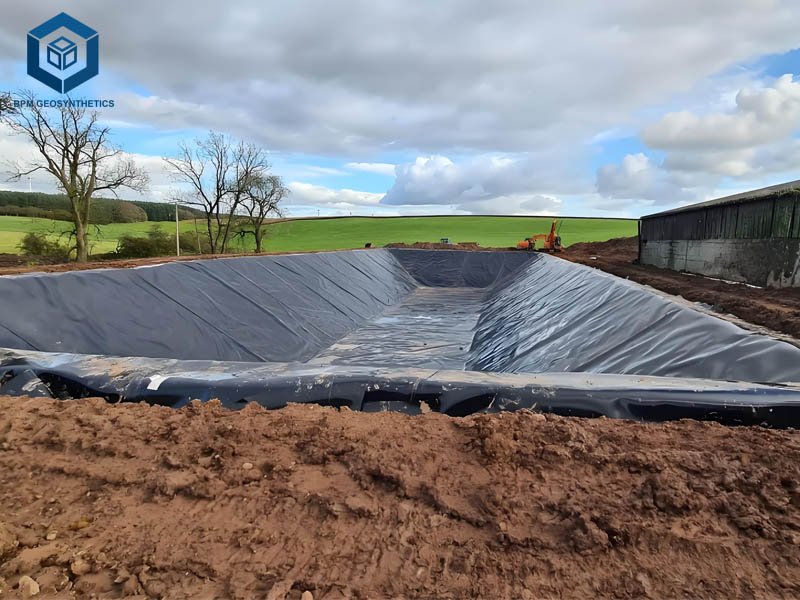
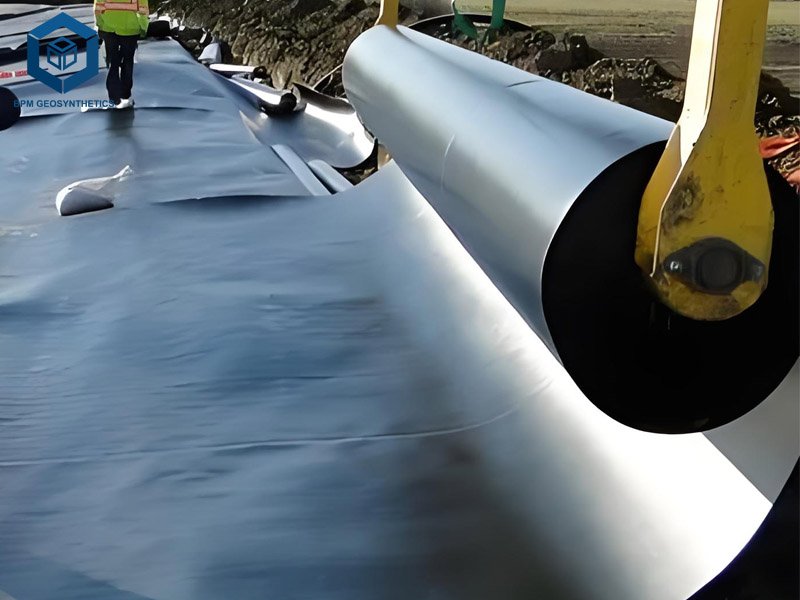
7. Comparison with Other Geomembranes
HDPE liners are often compared to LLDPE, PVC, and EPDM geomembranes. Below is a comparison:
| Parameter | HDPE | LLDPE | PVC | EPDM |
| Flexibility | Moderate (400–700%) | High (800–1000%) | High (300–400%) | Very High (400–600%) |
| Chemical Resistance | Excellent | Excellent | Good | Moderate |
| UV Resistance | Excellent | Good | Moderate | Excellent |
| Cost per sq.ft. | $0.20–$5.00 | $0.50–$1.50 | $0.40–$1.20 | $0.80–$2.00 |
| Applications | Landfills, mining, reservoirs | Ponds, landfills, mining | Ponds, roofing | Ponds, roofing |
HDPE liners excel in high-strength applications, while LLDPE is preferred for flexibility, and PVC/EPDM for cost-sensitive or decorative projects.
8. Case Study: HDPE Liner in a Landfill Project
In 2025, a U.S. landfill project used a 60 mil textured HDPE liner for a 15,000 m² site. The liner, costing $0.80/sq.ft. ($8.61/m²), was chosen for its 1200 N puncture resistance and GRI-GM13 compliance. Total costs included:
- Material: $129,150
- Geotextile: $7,500
- Installation: $22,500
- Freight and Testing: $10,000
- Total: $169,150 ($11.28/m²)
The project achieved zero leaks, meeting EPA standards, and the textured surface ensured slope stability, demonstrating HDPE’s reliability.
9. Conclusion
HDPE liners are a cost-effective, durable, and versatile solution for containment applications, with prices ranging from $0.20–$5.00/sq.ft. ($2.15–$53.82/m²) based on thickness, texture, and project scale. Their strength, chemical resistance, and 20–60-year lifespan make them ideal for landfills, mining, and water management projects. By understanding cost factors, specifications, and installation requirements, stakeholders can optimize budgets and ensure project success. For tailored solutions, contact suppliers like BPM Geosynthetics (BPM Geomembrane) or Agru America for quotes and technical support.

